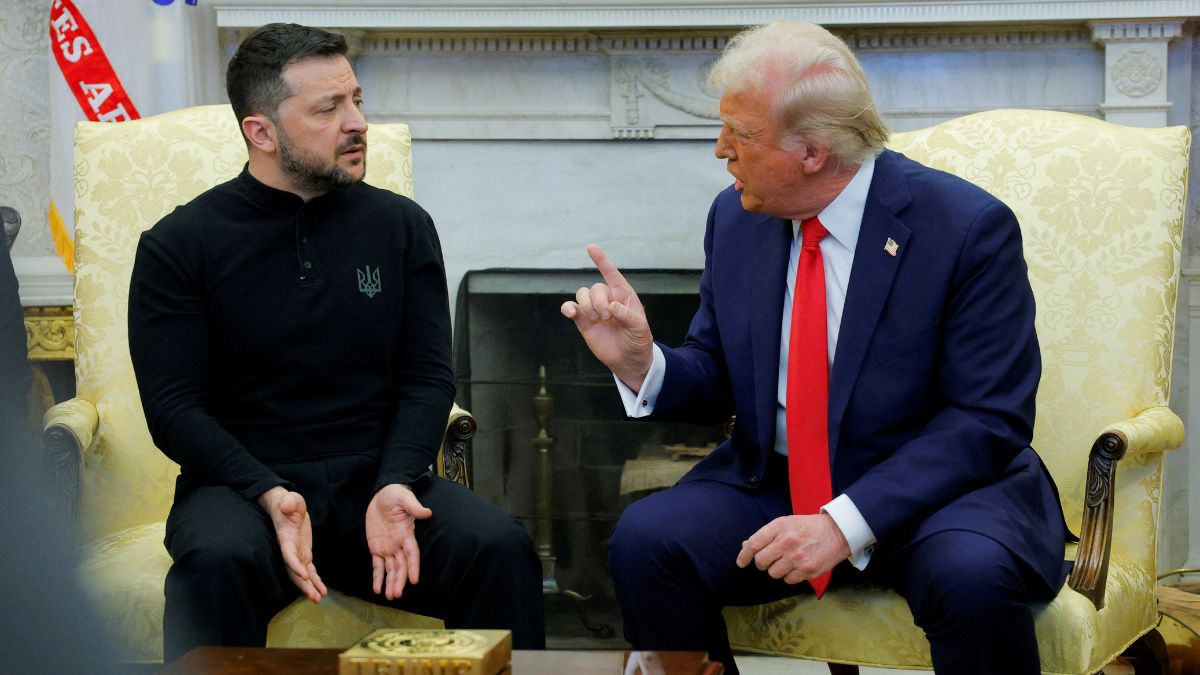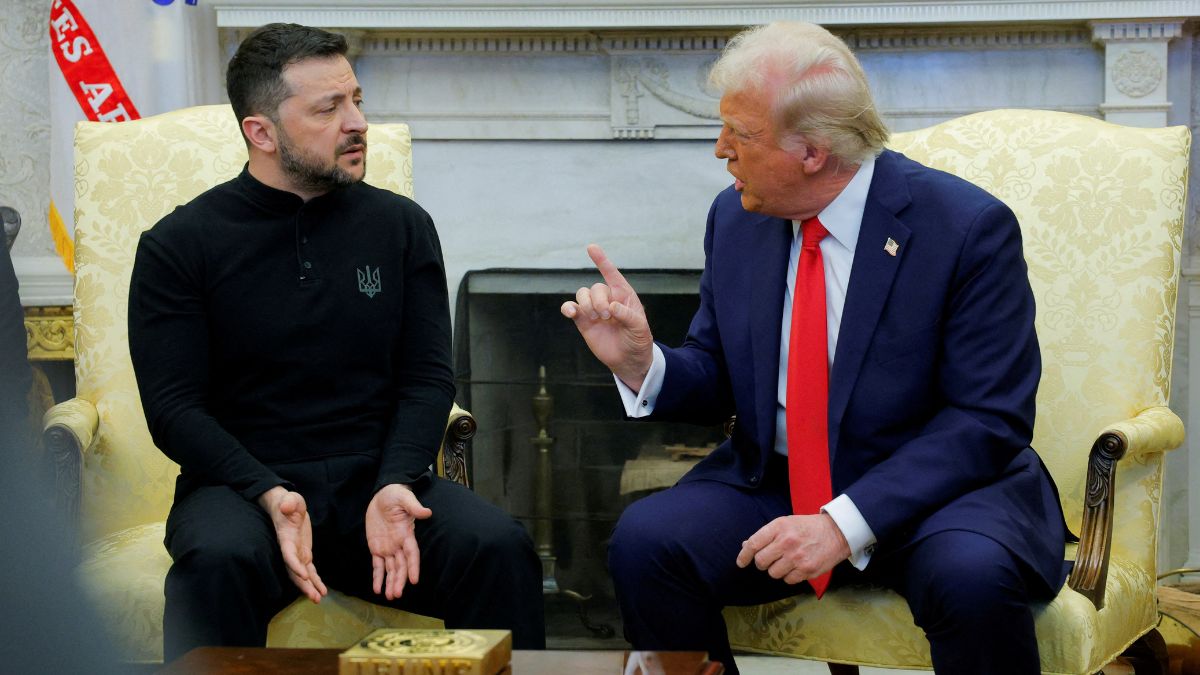The United States is set to challenge China’s dominance in global shipping.
The Donald Trump administration said it will increase port fees on Chinese-built vessels.
The US Trade Representative’s (USTR) has said the fees will begin being levied in 180 days.
The development comes as tensions continue to rise between the world’s two biggest economies.
It also comes on the one-year anniversary of the launch of the USTR’s investigation into China’s maritime activities.
In January, the agency concluded that China uses unfair policies and practices to dominate global shipping.
But what do we know? Why did China do it? And why does it matter?
What do we know?
The policy proposal was initiated by the previous the Biden administration, as per CNBC.
From October 14, Chinese-built and owned ships will be charged $50 per ton in US port fees.
That figure will increase by $30 per year over the next three years.
That will apply if the fee is higher than an alternative calculation method that charges $120 for each container discharged, rising to $250 after three years.
As per BBC, fees on Chinese vessel owners and operators of ships built in China will be depend on the weight of their cargo, how many containers they carry or the number of vehicles onboard.
Chinese-built ships owned by non-Chinese firms will be charged $18 per net ton, with annual fee increases of $5 over the same period.
Non-US built ships carrying cars will have to pay $150 per vehicle.
The fees will be applied once each voyage on affected ships a maximum of six times a year.
Empty vessels that turn up at US ports to carry bulk shipments such as grain and coal are exempted.
The original proposal called for Chinese operators to be charged up to $1 million per port call.
It also called for for non-Chinese-owned ocean carriers with fleets with Chinese-built vessels to be charged $1.5 million per US port call.
The USTR ultimately declined to impose fees based on the percentage of Chinese-built ships in a fleet or on prospective orders of Chinese ships, as originally proposed.
But why is the US taking on China in shipping?
China’s dominance in global shipping
The shipbuilding industry was once the pride of America in the period following the Second World War.
Today, it comprises just 0.1 per cent of global output.
US shipbuilders churn out around just five vessels annually.
This even as shipbuilding industry is big business.
As per Marine Insight, the shipbuilding market is currently valued at $155.58 billion in 2025.
That figure is expected to rise to $203.76 billion in 2033 on the strength of greater container and dry bulk trade and the opening of new markets.
As per the website, China, Japan, and South Korea are the top shipbuilding countries in the world.
Together, they account for 85 per cent of all the shipbuilding activities in the world.
The United Nations puts that figure even higher at 95 per cent.
As per Baltic Exchange.com, China’s share of the shipbuilding market has gone from under 5 per cent in 1999 to over 50 per cent in 2023.
China owns over 19 per cent of the global commercial fleet and has a virtual monopoly on shipping container production (95 per cent) and intermodal chassis supply (86 per cent).
China alone is building nearly half of all ships launched.
It puts out over 1,700 ships per year.
Chinese shipyards took 74 per cent of all new-build orders in 2024, as per the website.
As per Xinhua, China’s maritime fleet in September 2024 witnessed its capacity grow to 430 million deadweight tonnes.
It now comprises 18.7 percent of the world’s total capacity.
Chinese-made vessels will soon comprise 98 per cent of the trade ships in the world, as per CNBC.
Why it matters
Because China is the biggest exporter in the world and the largest producer of industrial goods.
As per the Observatory of Economic Complexity, China in 2023 exported goods worth $3.42 trillion.
That number, which was at $2.76 trillion in 2018, has increased by $662 billion in the past five years.
Its biggest exports are broadcasting equipment ($307 billion ), computers ($158 billon), integrated circuits ($154 billion), office machine parts ($89 billion), and electric batteries ($80 billion).
The most common destinations are United States ($436 billion), Hong Kong ($259 billion), Japan ($169 billion), Germany ($164 billion), and South Korea ($147 billion).
China is the second biggest economy in the world in terms of GDP at $17.8 trillion – a measure of all the goods and services produced in a country over a period – behind only the US with $27.36 trillion.
As per World Integrated Trade Solutions, its exports of goods and services as a percentage of GDP is 20.68 per cent.
While that figure isn’t as high as others estimate it to be at 40 per cent, that’s still a healthy chunk.
This gains further important because foreign trade inevitably has to rely on transport.
According to the UN Trade and Development, around 80 per cent of the volume of international trade in goods is carried by sea.
This is true from everything from food and furniture to cement and coal.
Which is why America is targeting Chinese shipbuilding.
“China has largely achieved its dominance goals, severely disadvantaging US companies, workers, and the US economy,” the USTR was quoted as saying by BBC.
“Ships and shipping are vital to American economic security and the free flow of commerce,” US Trade Representative Jamieson Greer said in a statement. “The Trump administration’s actions will begin to reverse Chinese dominance, address threats to the US supply chain, and send a demand signal for US-built ships.”
Why is the world worried?
Experts say the global supply chain is already facing issues as a result of the Trump tariffs.
BBC quoted Marco Forgione, director general of the Chartered Institute of Export & International Trade as saying the EU has seen a “significant build ups” of ships and there is “significant congestion” at UK ports.
“We’ve seen a lot of diversion of ships from China, that were due to head to the US, diverting and coming to the UK and into the EU.”
“That’s a direct impact of what President Trump is doing,” Forgione added.
Sanne Manders, president of logistics firm Flexport, said congestion in the UK “is particularly severe in Felixstowe”, while in continental Europe Rotterdam and Barcelona are “also pretty severe”.
“I do believe that if more cargo is going to be routed towards Europe, finding new buyers that will drive up the volumes even further, that could lead to more congestion,” Manders said.
China on Friday slammed the US.
“They drive up global shipping costs (and) disrupt the stability of global production and supply chains. They will not succeed in revitalising the US shipbuilding industry,” foreign ministry spokesperson Lin Jian was quoted as saying by Hindustan Times.
“Urge the United States to respect facts and multilateral rules and immediately stop wrongful practices. China will take necessary measures to defend lawful rights and interests.”
US industry executives feared virtually every cargo carrier could face steep, stacking fees that would make export prices unattractive and foist annual import costs of $30 billion on American consumers.
The USTR exempted ships that ferry goods between domestic ports as well as from those ports to Caribbean islands and US territories.
Both American and Canadian vessels that call at Great Lakes ports have also won a reprieve.
Foreign roll-on/roll-off auto carriers, known as ro-ros, are eligible for refunds of fees if they order or take delivery of a US-built vessel of equivalent capacity in the next three years.
Leaders of the United Steelworkers and the International Association of Machinists and Aerospace Workers, two of five unions that called for the investigation that led to Thursday’s announcement, applauded the plan and said they were ready to work with the USTR and Congress to reinvigorate domestic shipbuilding and create high-quality jobs.
The American Apparel & Footwear Association reiterated its opposition, saying port fees and proposed tariffs equipment will reduce trade and lead to higher prices for shoppers.
At a May 19 hearing, the USTR will discuss proposed tariffs on ship-to-shore cranes, chassis that carry containers and chassis parts.
China dominates the manufacture of port cranes, which the USTR plans to hit with a tariff of 100 per cent.
The Federal Register did not say if the funds raised by the fees and proposed crane and container tariffs would be dedicated to fund a revival of US shipbuilding.
With inputs from agencies


)
)
)
)
)
)
)
)
)